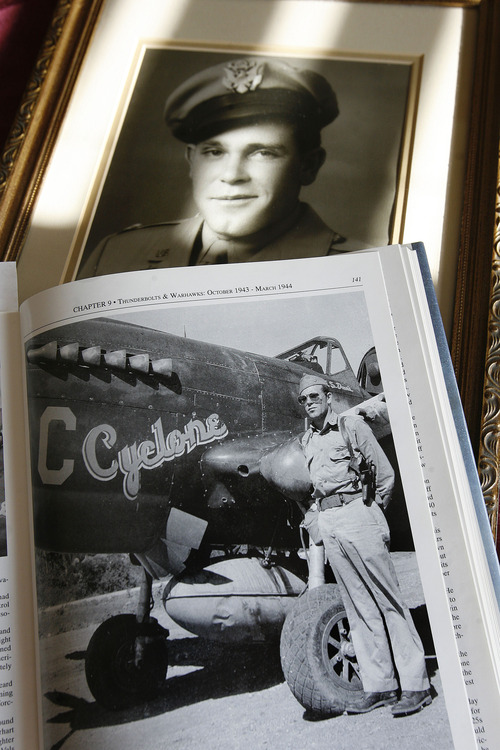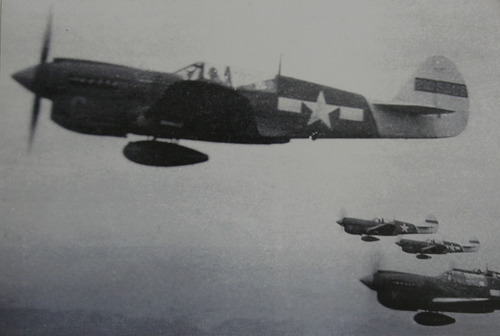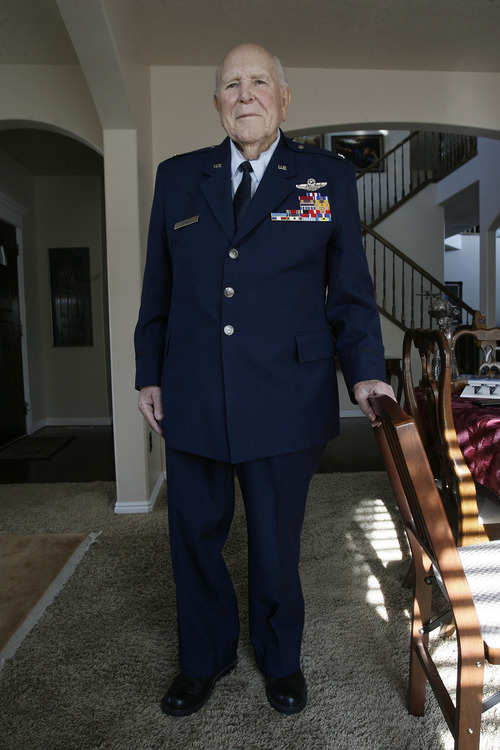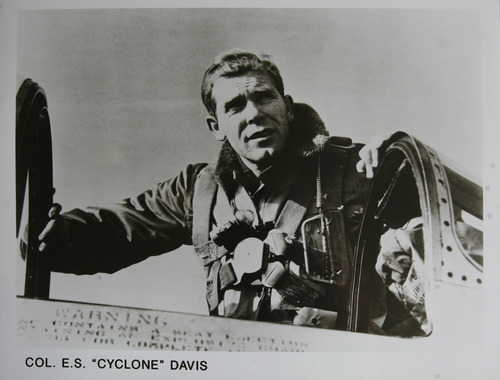This is an archived article that was published on sltrib.com in 2012, and information in the article may be outdated. It is provided only for personal research purposes and may not be reprinted.
Highland • Emmett "Cyclone" Davis was all alone as he flew the P-40 fighter plane south over Oahu on Dec. 7, 1941. He scanned the sky and could see no more attacking Japanese planes. No other American pilot had made it into that piece of the Hawaiian sky.
To his left, Davis saw clouds of black smoke rising from Pearl Harbor and could only imagine the blow the U.S. naval fleet had suffered. "It looked like it was on fire," he recalled Thursday.
But that day, Davis kept his mind on his mission: to check out reports of a Japanese land invasion at Barber's Point, west of Pearl Harbor.
The Roosevelt, Utah, native — one week shy of 23 and an Army Air Corps pilot for just more than a year — could be forgiven fear. If an invasion were underway, he would be vastly outnumbered.
But as he flew, Davis once told his son, he grew increasingly angry over Japan's surprise attack.
When he found nothing at Barber's Point — no invading forces and no aircraft carriers in the Pacific as far as he could see — Davis was almost disappointed. He'd missed his chance to strike a blow.
"That was what I was trained to do," Davis said Thursday at the Highland home he shares with his wife and daughter.
—
Utah roots • Davis, who will turn 94 on Dec. 12, uses a walker because macular degeneration has robbed him of his pilot's good eyesight.
But the retired Air Force colonel still cuts a robust profile in his Air Force uniform, an array of ribbons on his chest.
His memory is sharp, although his son, pediatrician J. Tucker Davis, helps him flesh out details of the exploits of his 23-year Air Force career, followed by 25 years in marketing for Hughes Aircraft in California.
Davis was born in Roosevelt, but his family moved to Salt Lake City from the Uintah Basin when he was a young teenager, and then to California not long after he graduated from East High School.
He came to Utah to marry his sweetheart, Marjorie Gwen Poulton, after the war, but the couple didn't return to live here until 2003, after Tucker made the move. Their daughters, Kimberlee Richards and Pamela Mull, now live in Utah as well.
—
On to Japan • Tucker Davis is writing a biography of his father, and his research has revealed some interesting facts: His father flew 220 combat missions during World War II, engaging the enemy in three dogfights. In his military career, he flew 122 different kinds of airplanes.
And, significantly, he was in on the two bookends of World War II in the Pacific: Pearl Harbor and the bombing that led to Japan's surrender in August 1945.
"I was one of the fortunate guys who got to go all the way through it," says the former pilot.
When Japan struck on Dec. 7, 1941, dragging the United States into the war, Davis was asleep on a friend's daybed at Wheeler Field, about 16 miles north of Pearl Harbor, after spending half the night playing poker.
He could see the Japanese fighters hitting planes from the window and rushed to the flight line, taxying four planes away from the flames. He used an ax to break into the ammunition supply to arm a plane.
Japanese fighters strafed him several times, and he still remembers the grin on the face of one Japanese gunner who, inexplicably, did not shoot him when he and another airman were pinned down.
Once he was in the air, a dispatcher sent Davis to investigate the reported Barber's Point invasion. The few other pilots able to get airborne that morning went east and were able to shoot down a few Japanese fighters.
Davis would spend all but six months of the war in the Pacific.
The day after the United States dropped an atomic bomb on Nagasaki, and four days after the bombing of Hiroshima, Davis — by then a lieutenant colonel and commander of the 8th Fighter Group — led 62 P-38 planes that dropped napalm on Kumamoto.
"The two big bombs got their attention, and my 62 P-38s brought them to the table," he says.
Pearl Harbor memorial events
• Survivors of Pearl Harbor will be recognized in a 12:30 p.m. ceremony Friday at the George E. Wahlen Veterans Home in Ogden. The Utah Department of Veterans Affairs has arranged a visit from the famous Budweiser Clydesdales from 1 to 3 p.m. at the veterans home, 1102 N. 1200 West in Ogden.
• Pearl Harbor survivor Emmett "Cyclone" Davis, a retired Air Force colonel and fighter pilot, will speak Friday at Williams Fine Art during a reception for a new show of vintage plane and ship paintings. The work of artists David Meikle, Ken Baxter and Stephanie Deer will be on display. The Pearl Harbor Memorial & LeConte Stewart Symposium will be from 5 p.m. to 9 p.m. at the gallery, 200 East South Temple, Suite 100, in Salt Lake City.
• "Honoring Our Veterans" is an exhibition on display at the University of Utah's J. Willard Marriott Library through the month of December. It includes more than 100 vignettes of veterans who have been honored by the U. since 1998, including Emmett "Cyclone" Davis, a survivor of the 1941 attack on Pearl Harbor.
Also included are photographs of Japanese American U.S. veterans of WWII, scrapbooks from the 10th Mountain Division and books from the Marriott Library's collections related to the Vietnam War.
The exhibition is in the George S. Eccles Special Collections Reading Room on Level 4. It's open from 8 a.m. to 6 p.m. Monday through Friday and from 9 a.m. to 6 p.m. on Saturdays.
Walter Jones, assistant head for special collections at the Marriott Library and the donor of a collection related to the Vietnam War, will lecture on that war Sunday at 3 p.m. at the Marriott Library, Gould Auditorium, Level 1.











